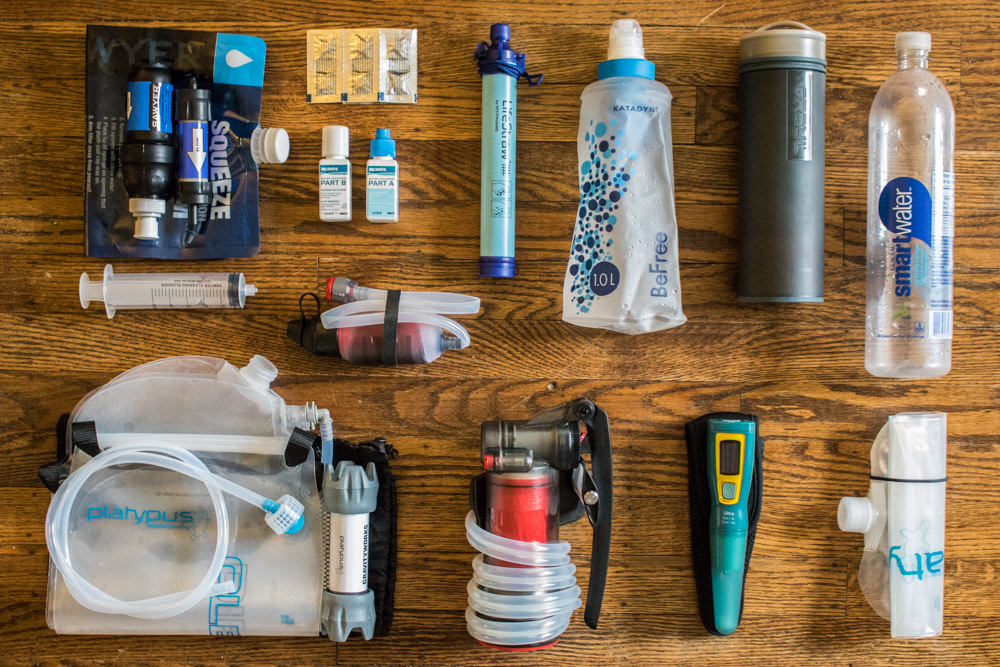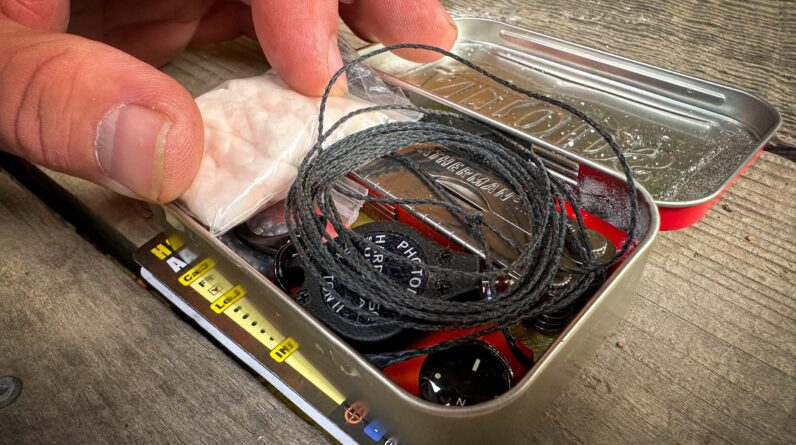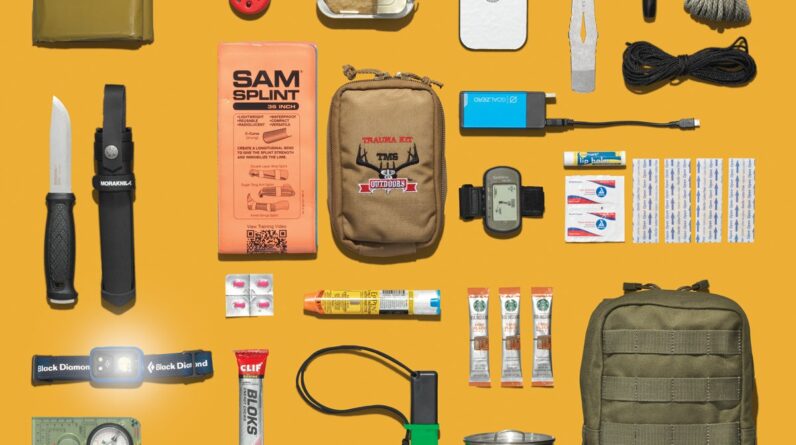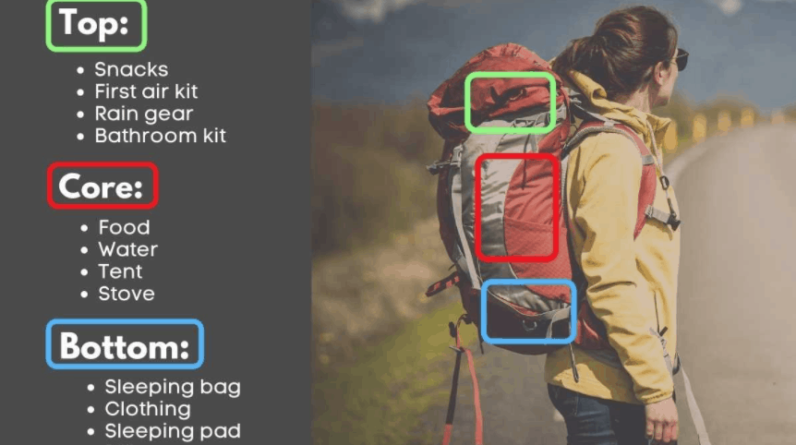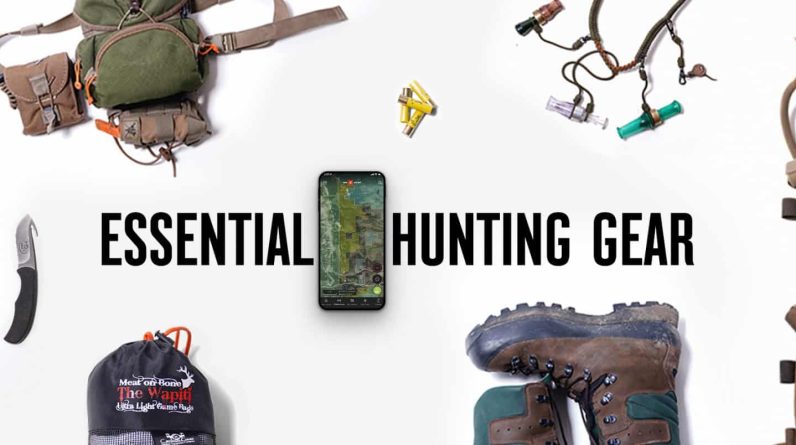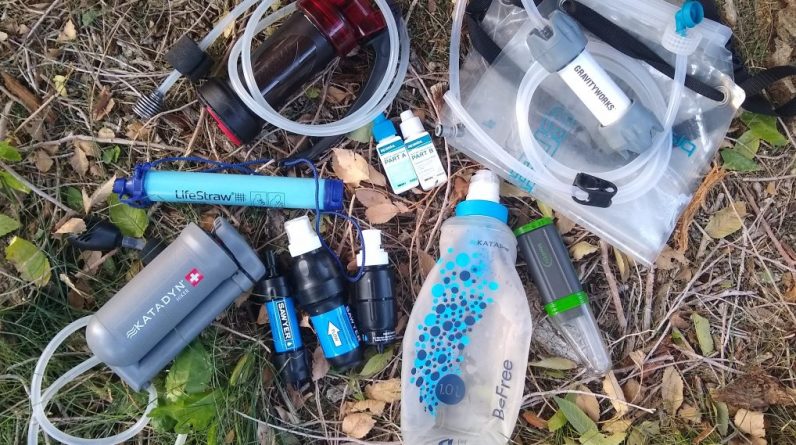
Are you planning a backpacking trip and wondering what type of water filtration system is best to take along? Well, you’re in luck! In this article, we’ll dive into the world of water filtration systems and help you choose the one that suits your needs the most. Whether you’re a seasoned backpacker or just starting out, having a reliable and effective water filtration system is essential for keeping yourself hydrated and healthy on the trail. So let’s get started and find out which system is perfect for your backpacking adventure.
When it comes to choosing a water filtration system for backpacking, there are a few factors to consider. First, you need to think about the type of water sources you’ll encounter on your trip. Will you mainly rely on streams and lakes, or will you have access to tap water at campsites? This will help determine the level of filtration you need. Second, consider the weight and size of the system. Backpackers need lightweight and compact gear, so a portable filtration system is crucial. Finally, think about the ease of use and maintenance. After a long day of hiking, you don’t want to spend too much time and effort filtering water.
In our detailed article, we will explore various types of water filtration systems suitable for backpacking, including pump filters, gravity filters, and portable water purifiers. We will discuss their pros and cons, as well as provide recommendations for specific brands and models. By the end of this article, you will have all the information you need to choose the best water filtration system for your upcoming backpacking adventure. So stay tuned and let’s make sure you’re well-prepared for safe and enjoyable hydration on the trail!
This image is property of images.squarespace-cdn.com.
Understanding the Importance of Water Filtration Systems
When embarking on a backpacking trip, it is crucial to prioritize your hydration needs. Clean drinking water is not always readily available in the wilderness, and consuming unfiltered water can lead to serious health risks. It is therefore essential to invest in a reliable water filtration system that will provide you with safe and clean drinking water throughout your outdoor adventures.
Why Clean Water is Essential for Backpacking
Water is a fundamental component of our survival, and it becomes even more critical when engaging in strenuous physical activities like backpacking. Adequate hydration is necessary to maintain your energy levels, regulate body temperature, and support overall bodily functions. However, the quality of water sources found in the wilderness can often be questionable.
While it may be tempting to drink directly from rivers, lakes, or even natural springs, it is important to understand that these water sources can be contaminated with harmful bacteria, parasites, and chemicals. Consuming untreated water can lead to illnesses such as diarrhea, gastrointestinal infections, and even more severe conditions like giardia or cryptosporidium. Therefore, relying on a water filtration system is a wise and necessary choice to ensure your health and well-being while backpacking.
The Dangers of Consuming Unfiltered Water in the Wilderness
When you are out in the wilderness, it is crucial to be aware of the potential dangers that come with consuming unfiltered water. Many of the contaminants found in natural water sources are invisible to the naked eye, making it impossible to determine their presence without proper filtration or testing.
Some common waterborne contaminants that can be found in wilderness water sources include bacteria like E. coli and Salmonella, parasites like giardia and cryptosporidium, as well as various harmful chemicals and heavy metals. These contaminants can cause a range of health issues, from mild gastrointestinal discomfort to more serious long-term health problems. By investing in a water filtration system, you can effectively eliminate these risks and enjoy your backpacking trip with peace of mind.
Types of Water Filtration Systems
When it comes to water filtration systems for backpacking, there are several options available on the market. Each type of system has its own set of pros and cons, and choosing the right one depends on your specific needs and preferences. Let’s take a closer look at the different types of water filtration systems commonly used by backpackers:
Pump Filters
Pump filters are a popular choice among backpackers due to their versatility and effectiveness. These filters work by manually pumping water through a filtration element, which removes contaminants and purifies the water. Pump filters usually offer a high flow rate, making them suitable for groups or individuals who require larger quantities of water. They are also known for their durability and long lifespan.
However, pump filters can be relatively heavy and bulky compared to other options, which may not be ideal for ultralight backpackers or those looking to minimize their pack weight. Additionally, the pumping action required to filter the water can be tiring and time-consuming, especially when dealing with larger volumes.
Gravity Filters
Gravity filters are an excellent choice for backpackers who prioritize convenience and ease of use. These systems rely on gravity to pull water through a filtration element, effectively removing contaminants. Gravity filters are simple to operate and require minimal effort, as you only need to fill the dirty water reservoir and let gravity do the work.
One of the main advantages of gravity filters is their ability to filter larger quantities of water at once, making them suitable for groups or individuals who need to replenish their water supply quickly. However, gravity filters can be bulkier and heavier than other options, and they may require more time to filter the water compared to pump filters.
Squeeze Filters
Squeeze filters are compact and lightweight options that offer great versatility for backpackers. These filters typically consist of a collapsible water pouch and a filtration element. To use a squeeze filter, you simply fill the water pouch, attach the filter, and squeeze the water through the filtration element.
Squeeze filters are known for their fast flow rate and ease of use. They are convenient for individuals who prefer a hands-on approach to filtering water and need a compact filtration system. However, squeezed filters may have a lower filtering capacity compared to gravity or pump filters, and they may not be suitable for filtering large volumes of water at once.
Straw Filters
Straw filters, also known as personal filters, are compact, lightweight, and designed for individual use. These filters are typically about the size of a drinking straw and allow you to drink directly from the water source. As you suck the water through the straw filter, it removes contaminants, providing you with clean drinking water.
Straw filters are popular among solo backpackers or those who prefer to travel light. They are extremely portable and easy to use, requiring no additional equipment or set-up. However, straw filters have limited filtering capacity and are not suitable for filtering water for an entire group. They are best suited for emergency situations or as a backup option.
UV Filters
UV filters use ultraviolet light to kill or inactivate harmful microorganisms present in the water. These filters typically require a battery or USB power source to operate, and they work by exposing the water to UV light, effectively sterilizing it.
UV filters are known for their effectiveness in treating a wide range of waterborne pathogens, including bacteria, viruses, and parasites. They are easy to use, require minimal maintenance, and do not use chemicals in the filtration process. However, UV filters may not be suitable for filtering turbid or cloudy water, as UV light can have reduced effectiveness in such conditions.
Chemical Treatment
Chemical treatment is another method commonly used for water purification in the wilderness. Chemicals such as iodine, chlorine dioxide, or water purification tablets can effectively kill or deactivate harmful microorganisms present in the water.
Chemical treatment is a lightweight and cost-effective option, making it popular among backpackers who prioritize minimal pack weight. However, chemical treatment may leave an unpleasant taste or odor in the water, and it may take up to 30 minutes for the chemicals to fully purify the water. Additionally, some individuals may have sensitivities or allergies to these chemical treatments.
Comparing the Pros and Cons of Each Type
To choose the ideal water filtration system for your backpacking needs, it is essential to consider the pros and cons of each type and evaluate how well they align with your specific requirements. Here is a summary of the main advantages and disadvantages of each type of water filtration system:
-
Pump Filters:
- Pros:
- Versatile and effective filtration
- High flow rate for larger volumes of water
- Durable and long-lasting
- Cons:
- Relatively heavy and bulky
- Requires pumping action, which can be tiring
- Pros:
-
Gravity Filters:
- Pros:
- Convenient and easy to use
- Suitable for filtering larger quantities of water
- No pumping action required
- Cons:
- Bulkier and heavier compared to other options
- Slower filtration time
- Pros:
-
Squeeze Filters:
- Pros:
- Compact and lightweight
- Fast flow rate
- Easy to use
- Cons:
- Lower filtering capacity
- Not suitable for filtering large volumes of water
- Pros:
-
Straw Filters:
- Pros:
- Compact and lightweight
- Extremely portable
- Easy to use
- Cons:
- Limited filtering capacity
- Not suitable for group use
- Pros:
-
UV Filters:
- Pros:
- Effective against a wide range of pathogens
- Easy to use
- Minimal maintenance
- Cons:
- Reduced effectiveness in turbid or cloudy water
- Requires battery or power source
- Pros:
-
Chemical Treatment:
- Pros:
- Lightweight and cost-effective
- Kills or deactivates microorganisms
- Cons:
- Unpleasant taste or odor
- Longer wait time for purification
- Pros:
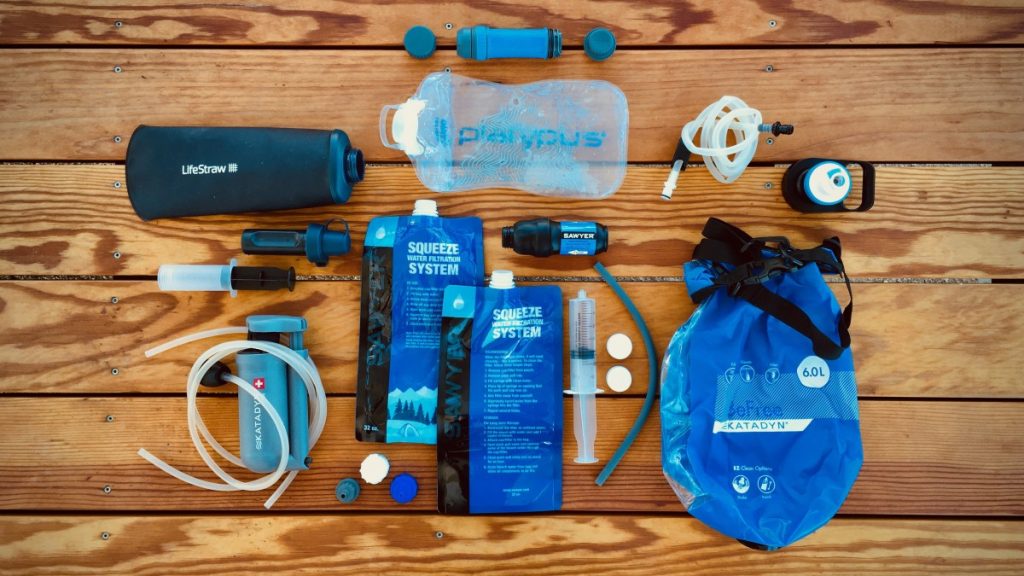
This image is property of u7q2x7c9.stackpathcdn.com.
Considerations for Choosing a Water Filtration System
Now that we have explored the different types of water filtration systems available, it is important to consider various factors to ensure you choose the best one for your backpacking needs. Here are some key considerations to keep in mind when selecting a water filtration system:
Ease of Use and Portability
When you’re out on the trail, convenience is crucial. Look for a filtration system that is easy to set up and operate, requiring minimal effort and time. The system should be lightweight and portable, allowing you to carry it comfortably in your backpack without adding unnecessary weight.
Filtering Capacity and Speed
Consider how much water you will need to filter per day and how quickly the system can provide you with clean drinking water. If you are traveling in a group or need to filter large quantities of water, opt for a filtration system with a higher filtering capacity or a fast flow rate.
Maintenance and Longevity
Check the maintenance requirements of the filtration system. Does it require regular cleaning, backflushing, or replacement of parts? Consider the long-term cost and upkeep associated with the system to ensure it aligns with your preferences and abilities.
Weight and Packability
Take into account the weight and size of the filtration system. If you’re an ultralight backpacker or have limited space in your pack, prioritize compact and lightweight options that won’t weigh you down or take up too much valuable space.
Compatibility with Various Water Sources
Consider the types of water sources you are likely to encounter during your backpacking trips. Ensure that the filtration system you choose is capable of effectively treating water from rivers, lakes, streams, and other natural sources commonly found in the wilderness.
Assessing Water Quality in the Wilderness
Before you can effectively choose a water filtration system, it is essential to understand the quality of water sources in the wilderness. Here are some key considerations for assessing water quality:
Identifying Potential Waterborne Contaminants
Learn about the common contaminants found in natural water sources, including bacteria, parasites, viruses, and chemicals. Understanding the potential risks will help you make an informed decision when selecting a filtration system.
Understanding Common Water Sources in the Wilderness
Familiarize yourself with the types of water sources you are likely to encounter during your backpacking trips. Research rivers, lakes, springs, and streams in the areas you plan to explore to gain insight into the potential quality of the water they provide.
Testing Water Purity
Consider conducting water tests to assess the purity of the water you encounter in the wilderness. Water testing kits are readily available and can help you identify the presence of harmful contaminants.
Interpreting Water Test Results
Learn how to interpret water test results to determine the extent of contamination in a particular water source. This information will guide you in choosing an appropriate water filtration system to effectively address the identified contaminants.
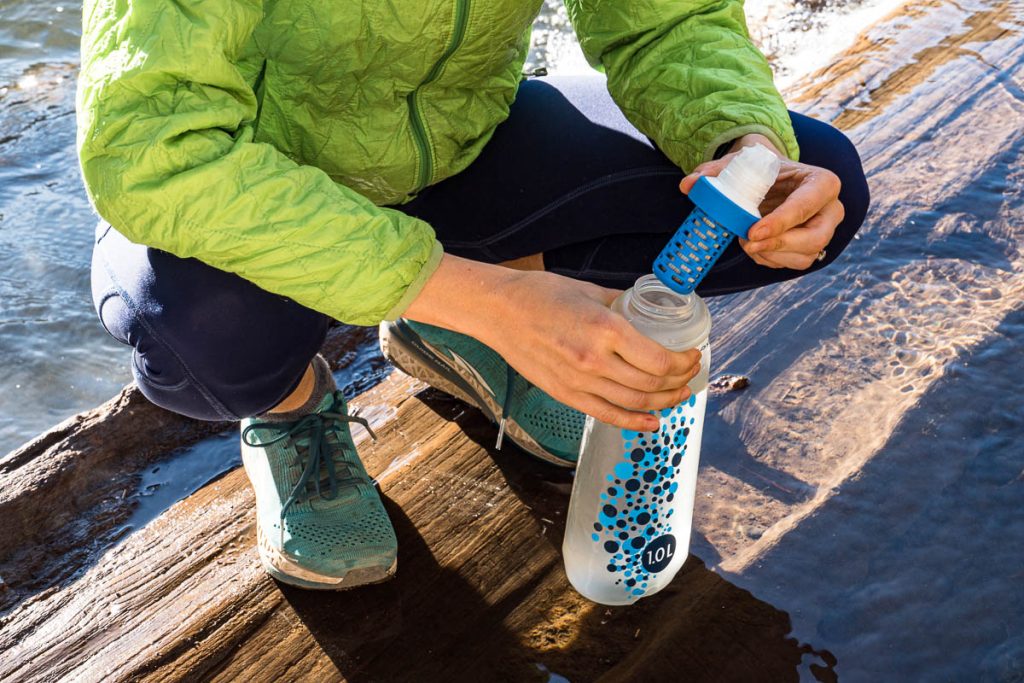
This image is property of www.freshoffthegrid.com.
Evaluating Filtration System Features
When comparing water filtration systems, it is crucial to understand the various features and specifications that can impact their performance. Here are some key features to evaluate:
Filtration Pore Size
The filtration pore size determines the size of particles and contaminants that the system can effectively remove. Smaller pore sizes offer better filtration, as they can capture smaller microorganisms and particles.
Activated Carbon and Chemical Filtration
Some filtration systems incorporate activated carbon or chemical elements to enhance the removal of chemicals, odors, and improve the taste of the water. Consider whether these additional features are important to you.
Flow Rate
The flow rate refers to how quickly the filtration system can provide you with clean drinking water. A higher flow rate is beneficial if you need to filter water quickly.
Filter Lifespan
Check the expected lifespan of the filtration element or cartridge. Consider how frequently it will need to be replaced and the associated cost.
Backflushing Mechanisms
Some filtration systems offer mechanisms for backflushing, which helps to clean and prolong the lifespan of the filtration element. This feature can be beneficial in maintaining optimal performance and reducing maintenance requirements.
Weight and Size Considerations
Evaluate the weight and size of the filtration system, considering your specific backpacking needs. Balance the desire for a lightweight system with other important factors such as filtering capacity and durability.
Reviews of Top Water Filtration Systems for Backpacking
To help you further in selecting the best water filtration system for backpacking, here are brief reviews of three top-rated products:
Product A: Features, Pros, and Cons
Product A is a highly regarded pump filter that offers effective filtration and a high flow rate, making it suitable for group backpacking. It is known for its durability and long lifespan. However, it may be on the heavier side compared to other options, which could be a drawback for ultralight backpackers.
Product B: Features, Pros, and Cons
Product B is a compact and lightweight squeeze filter that is favored by solo backpackers due to its simplicity and ease of use. It provides fast flow rates and is easy to clean. However, the filtering capacity may be limited for larger groups or extended trips.
Product C: Features, Pros, and Cons
Product C is a straw filter that offers extreme portability and convenience. It is incredibly lightweight and easy to use, making it an excellent backup option or emergency tool. However, it may not be suitable for group use and has a limited filtering capacity.
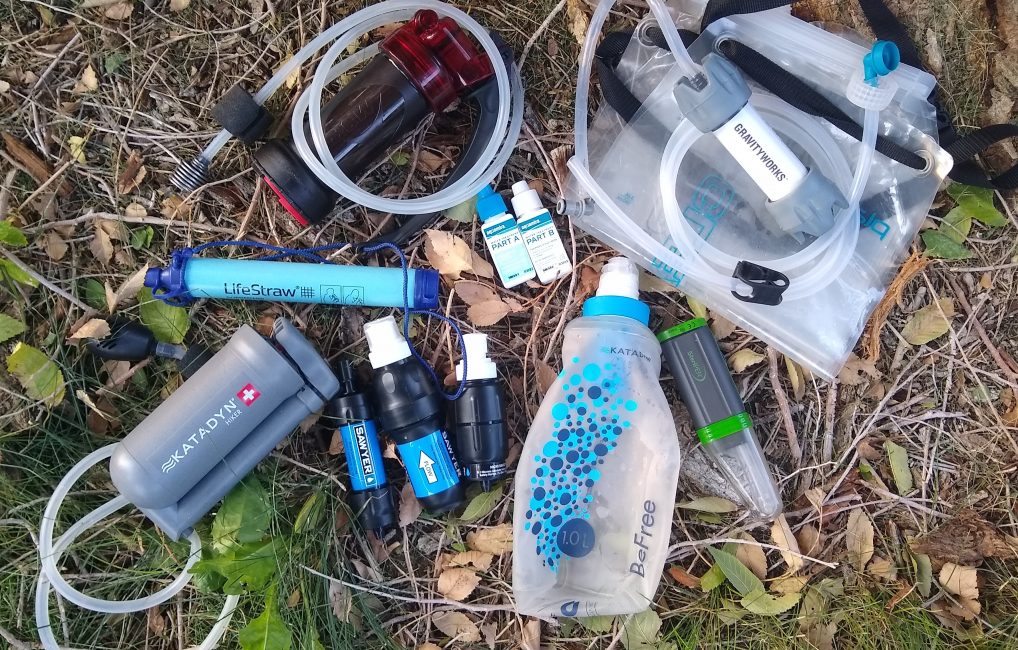
This image is property of www.99boulders.com.
Factors to Consider while Comparing Water Filtration Systems
When comparing water filtration systems, consider the following factors to make an informed choice:
Price and Budget
Evaluate the cost of the filtration system and ensure it aligns with your budget and needs. Consider not only the initial purchase cost but also any ongoing maintenance requirements and replacement filters.
Effectiveness and Efficiency
Assess the effectiveness of the filtration system in removing various contaminants and the efficiency in providing you with clean drinking water quickly. Look for systems with independent certification to ensure they meet rigorous standards.
User-Friendliness
Consider how easy and intuitive the filtration system is to use, set up, and maintain. Look for features like tool-free assembly and clear instructions to minimize any frustrations or complications.
Additional Features or Accessories
Evaluate any additional features or accessories offered with the filtration system. This could include integrated storage containers, backflushing mechanisms, or compatibility with hydration bladder systems. Determine which features are important to you and enhance your backpacking experience.
Tips for Properly Using a Water Filtration System
To ensure you get the most out of your water filtration system, here are some important tips to follow:
Pre-Filtering and Settling Water
Before filtering, allow the water to settle in a container or pre-filter it to remove larger sediment and debris. This step can help extend the lifespan of the filtration element.
Priming the Filter
If your system requires priming, follow the manufacturer’s instructions to properly saturate and prepare the filtration element for use. Priming ensures optimal performance and prevents air pockets from affecting the flow rate.
Filtering Techniques
Understand the recommended filtering techniques for your specific system. This may include pumping, squeezing, or drinking directly from a straw filter. Follow the instructions carefully to ensure effective filtration.
Cleaning and Storing the System
Regularly clean and maintain your water filtration system according to the manufacturer’s instructions. This will help prevent clogging, maintain flow rates, and extend the lifespan of the filtration element. After each use, thoroughly dry the system before storing it to prevent the growth of mold or bacteria.
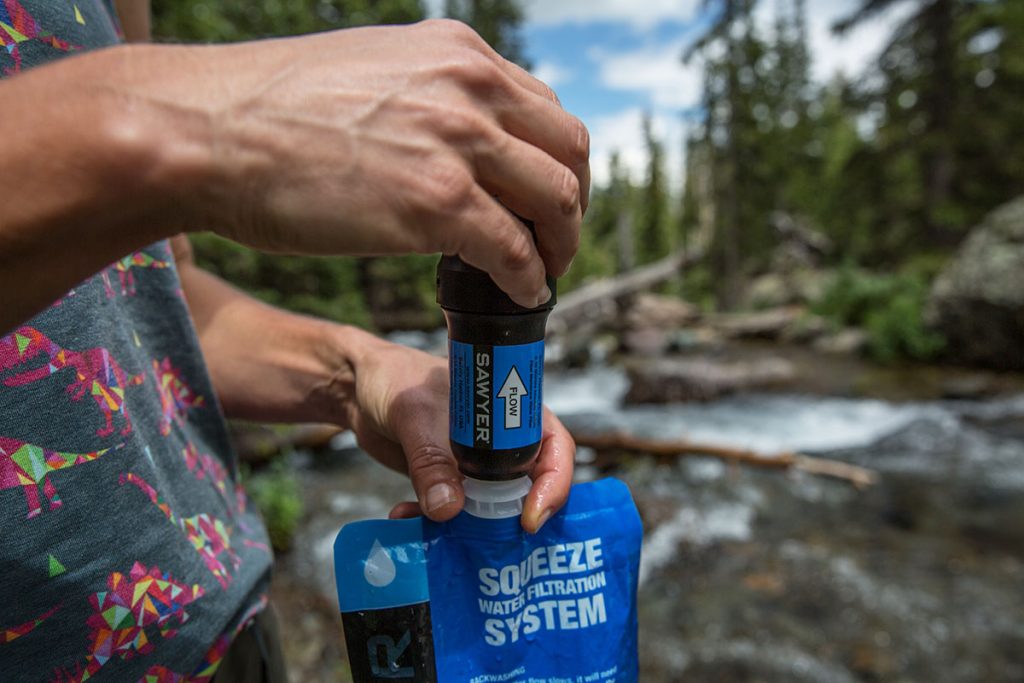
This image is property of www.switchbacktravel.com.
Understanding Maintenance and Replacement Requirements
To ensure the long-term performance and reliability of your water filtration system, it is important to understand the maintenance and replacement requirements. Here are some key considerations:
Regular Cleaning and Maintenance
Most water filtration systems require regular cleaning to maintain optimal performance. Follow the manufacturer’s instructions for cleaning intervals and recommended cleaning methods.
Replacing Filters and Cartridges
Be aware of the expected lifespan of the filtration element or cartridge in your system. Regularly monitor its condition and replace it when necessary to ensure the continued effectiveness of the filtration system.
Storing the System during Off-Seasons
If you won’t be using your water filtration system for an extended period, ensure you properly clean and dry it before storing it. Store it in a cool, dry place to prevent any damage from moisture or extreme temperatures.
Conclusion
When it comes to backpacking, choosing the best water filtration system is crucial for your overall health and well-being. Drinking clean and safe water is a necessity to stay properly hydrated and avoid potential waterborne illnesses while enjoying the great outdoors.
By understanding the importance of water filtration systems and assessing the various types available, you can make an informed decision that suits your specific backpacking needs. Consider factors such as ease of use, filtering capacity, maintenance requirements, and compatibility with water sources. Evaluate the pros and cons of the different filtration methods and compare product features and prices to select the best option for you.
Remember to properly use, clean, and maintain your chosen water filtration system to ensure its longevity and effectiveness. By taking the necessary precautions and choosing a reliable water filtration system, you can ensure safe and clean drinking water on all your outdoor adventures. Stay hydrated, stay healthy, and enjoy your backpacking trips to the fullest!

